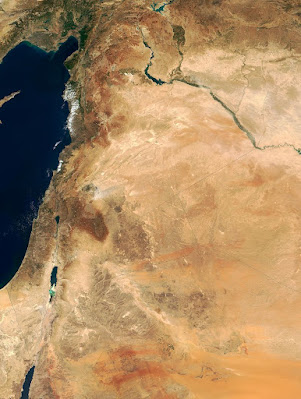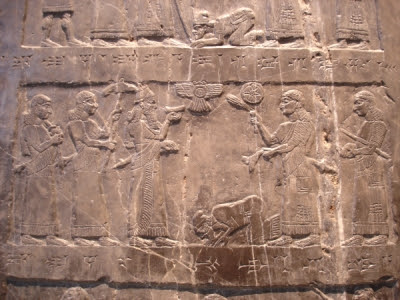“This book is intended for people of all faiths – and for skeptics, too. It reflects no particular religious commitments – nor is it anti-religious. The authors include Protestants, Catholics, and Jews. They live in Israel, France, and the United States.”
– Hershel Shanks, in “Ancient Israel: From Abraham to the Roman Destruction of the Temple” (Revised & Expanded Edition), page xvii – part of a section entitled “Introduction to the Original Edition”
This book is an introduction to the much-debated archeology of the Bible
The archeology of the Bible is one of the most hotly-debated areas in all of archeology. Jews, Christians, and their respective critics all seem to have something to say about it. Some Jewish and Christian scholars have gone so far as to argue that archeology “proves” the truth of either the Hebrew Bible, or the Christian Bible, or both. Some critics of these religions have done the exact opposite, arguing that archeology “disproves” one or both of these religions. The archeological evidence, they say, is “inconsistent” with the historical narrative as presented by their respective scriptures.
This book is written mostly by believers, but it still doesn’t try to prove the Bible
In the context of this debate, it is interesting to note two important things about this book. One is that it was written by believers, or at least primarily by believers. The “Introduction to the Original Edition” says that “The authors include Protestants, Catholics, and Jews” (as cited above). It does not say that all of the book’s authors are believers, but it does seem to imply that at least a good majority of them are such. That is the first thing to note here. The second is that, despite the fact that the believing perspective is well-presented in this book, this book does not endeavor to “prove” the Bible – or any part thereof, for that matter. If memory serves, one of the authors actually says that the most we can expect from archeology is to make a particular Biblical story more plausible. They try to examine the historical context of the period, and see what light can be shed on certain parts of the Bible. Sometimes, they conclude that historical and archeological evidence make a particular part of the Bible “more plausible.” Other times, they conclude that current archeological evidence doesn’t shed much light on a particular subject, and acknowledge the gaps in the currently-available evidence. To me, this is evidence of objectivity, which is consistent with having an opinion on whether the Bible is true. Both sides of this debate have such opinions, and neither side can be dismissed simply for having these opinions, if I may be so bold.
The Levant and Canaan
The book begins with the patriarchs of Abraham, Isaac, and Jacob …
In the aforementioned “Introduction to the Original Edition,” Hershel Shanks discusses why their coverage begins where it does. “For many scholars,” Mr. Shanks says, “the more difficult question will be why we began so early, rather than so late – with the patriarchs rather than, say, with the Israelite settlement in Canaan. Some scholars will question whether there is any discoverable history in the Bible’s stories about the patriarchs Abraham, Isaac and Jacob. There is obviously a historiographic problem here, to which we shall return. Suffice it to say at this point,” Mr. Shanks continues, “that the fact that the Bible recites the stories of the patriarchs as the earliest chapters of Israelite history is enough to require a consideration of the extent, if any, to which these stories reflect or contain history of one sort or another. We are not, a priori, committed to an answer, but we are committed to asking the question.” (Source: Page xix)
Excavated ruins at Ras Shamra in Syria
… rather than with the earliest Biblical topic of all (which is creation)
That is a significant paragraph. Among other things, this paragraph reveals that they are beginning their story earlier than most textbooks would. Most textbooks would begin their story a little later than the patriarchs. But equally importantly, it means that they are still not considering the earliest Biblical topic of all, which is creation. This is as it should be. Debates about creation, evolution, and the age of the earth are more appropriate for other classes in other subjects. Specifically, biology and geology both undertake to cover these kinds of subjects. As Biblical archeologists, these scholars are instead trying to focus their inquiries on this later period, and what the archeological evidence can tell us about this still-massive time period.
Holyland Model of Jerusalem, with a model of Herod’s Temple – Israel Museum, Jerusalem
This book focuses mostly on the period of the Hebrew Bible (or “Old Testament,” if you prefer)
This book focuses primarily on the period of the Hebrew Bible – or the “Old Testament,” as it is known to Christians. Only in the last chapter of the book does it discuss anything related to Christianity’s New Testament period. But this focus may actually be a good thing, for at least three reasons. First of all, the period of the “Hebrew Bible” is of great interest to Jews as well as Christians, while the New Testament (generally speaking) is not – or, at least, not quite as much. Secondly, in terms of time spans, the Hebrew Bible represents most of Christianity’s “Biblical period.” Thus, even for Christians, most of the debates about the Bible’s historicity revolve around the Hebrew Bible period – or the “Old Testament” period, as it is known to the Christians. Thirdly, the New Testament period is covered in the sequel to this book, as are developments in Jewish history during that same time. Thus, this focus actually seems to me to be a good thing.
The caves at Qumran, where the famous Dead Sea Scrolls were discovered
The broader context of the Ancient Near East – and, to a lesser extent, Ancient Egypt
I was glad that I had done some other reading on the broader history of the Ancient Near East before tackling this book. This is because it helped me to appreciate some of the historical context of this period. For example, I knew some basics about the various other cultures of the region – Gentile cultures, that is – and how they had battled each other for power and control in this hotly-contested region. But this book can be appreciated even without such a background, because they still discuss how these other cultures affect Ancient Israelite culture. The archeological evidence for these other cultures, not to mention their written records, are used to shed light on the Hebrew Bible to the greatest extent possible. But only in one chapter does Ancient Egypt become central to the narrative. This is the second chapter, which is entitled “Israel in Egypt: The Egyptian Sojourn and the Exodus.” I was glad that I had also read “The Oxford History of Ancient Egypt” before I read this book. This is because “The Oxford History of Ancient Egypt” focuses on the archeology of this specific region – namely, Egypt. But again, this book can be appreciated even without such historical background. Again, their primary focus is on what happened to the Israelites, and on what the archeological evidence tells us about the connections between Ancient Israel and its various neighbors in the area.
Dwelling foundations unearthed at Tell es-Sultan in Jericho
The debates over Biblical archeology tend to swirl around the details
Because these Gentile cultures were larger and more powerful, there is a greater abundance of source material about them, both from written sources and from the archeological evidence. To get information about Ancient Israelite culture, you sometimes have to turn to the information about their diverse and numerous conquerors. As you might expect, this tells us about the biased way in which these cultures saw the Israelites, whom they often subjugated – and, sadly, even enslaved. But it also provides historical context about the various Gentile cultures who ruled over the unfortunate Israelites, and when and where this subjugation took place. These details about times and places, and the broader picture of the Ancient Near East, are the kinds of issues that the greater part of Biblical-archeology debates have tended to swirl around. Thus, it is helpful to hear these scholars’ take on it, and how certain parts of the Bible can be corroborated by the broader historical and archeological record. They also provide a number of helpful pictures (mostly cheaper black-and-white photographs), which allow you to see surviving objects and buildings – not to mention ruins of various locations. This allows one to better visualize the historical and archeological context in which the Bible takes place.
First depiction of Jehu on the Black Obelisk of Shalmaneser III
Conclusion: This is an excellent introduction to a most important subject
I didn’t always agree with these scholars, but I agreed with them more often than I disagreed. More to the point, I found their narrative to be quite helpful, since it helped me to appreciate the arguments of both sides in these debates. I believe that they are fair to both sides, even when they try to answer some of the criticisms that unbelieving scholars have made. At times, they even conclude that certain questions are simply unanswerable at the moment, acknowledging a lack of clarity in the relevant evidence – something that shows these scholars’ objectivity to be quite genuine. To me, this seems to prevent this book from being the kind of “partisan hack-job” that many works on both sides have tended to be. Instead, this book is an objective weighing of the various kinds of evidence, which will serve as a great introduction to the subject. You may or may not agree with it, but you will still get a good introduction to the available evidence, and what it has to say about some of the most hotly-debated passages of the Hebrew Bible.
“… many scholars will question our decision to end with the Roman destruction of the Temple in 70 A.D. In discussing this project with scholars, I was told several times that it would be more appropriate to continue the story to 135 A.D., when the Romans finally suppressed the Second Jewish Revolt, the so-called Bar-Kokhba Revolt.
There is substance to this contention. I nevertheless rejected it for several reasons … perhaps decisive, we hope to produce a subsequent volume tracing the parallel developments of Christianity and Judaism during the early centuries of the Common Era; in that book, we will cover the events both leading up to and following the Bar-Kokhba Revolt. [Footnote: We have since realized this hope, with the publication of Christianity and Rabbinic Judaism: A Parallel History of Their Origins and Early Development …]”
– Hershel Shanks, in “Ancient Israel: From Abraham to the Roman Destruction of the Temple” (Revised & Expanded Edition), pages xix-xx – part of a section entitled “Introduction to the Original Edition”
If you liked this post, you might also like:
Why I am learning Biblical Hebrew
Learning the basics of Biblical Hebrew from a book
Aramaic: The OTHER Bible language
Learning the basics of Biblical Hebrew from a book
Aramaic: The OTHER Bible language










No comments:
Post a Comment